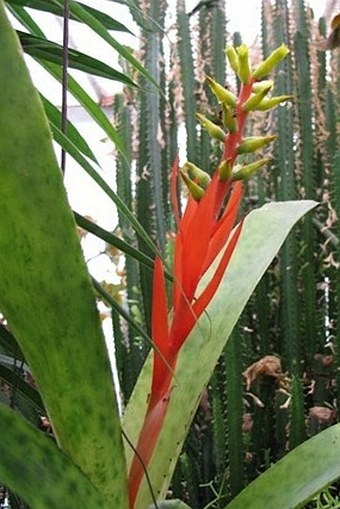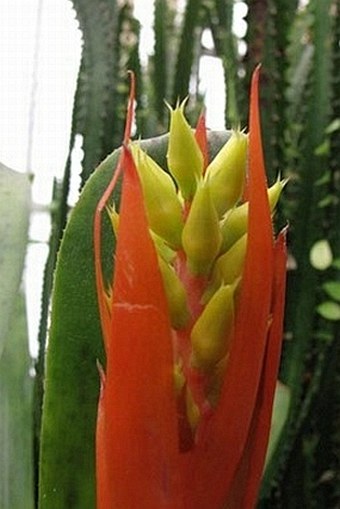Syn.: Billbergia nudicaulis (L.) Lindl., Bromelia nudicaulis L., Hohenbergia nudicaulis (L.) Baker, Hoplophytum nudicaule (L.) K. Koch, Pothuava nudicaulis (L.) Regel, Tillandsia serrata Sessé et Moc.
Family: Bromeliaceae Juss.

Distribution: Central America from southern Mexico (Chiapas, Puebla, Veracruz) to Panama, West Indies, Venezuela, coastal zone of Ecuador, and eastern part of Brazil (Cerrado, Mata Atlântica).
Ecology: Mainly epiphytic plant, occasionally terrestrial, in seasonally semideciduous forests, from sea level to 1200 m.
Description: Monocarpic, stiff, robust, tubular plant with not many strap-like leaves, rounded at the tip, bright green with darker, irregular blotches, 20–50 cm long. Inflorescence scape, pink to red, reaches about 20–30 cm out the rosette, with large scape bracts, 10–15 cm long, elliptical, sharply pointed; flower panicle with 10–20 flowers, floral bracts, red, shorter than ovary; 3 sepals pointed into a spine (mucronulate), 5–10 mm long, greenish yellow; 3 bright yellow petals, 12 mm long; ovary green, about 5 mm long, elliptical. Fruit is white berry.
Notes: Easy of culture; rosette, before dying, produces pups (young plants) from twisting stolons.



These images were taken in culture.


